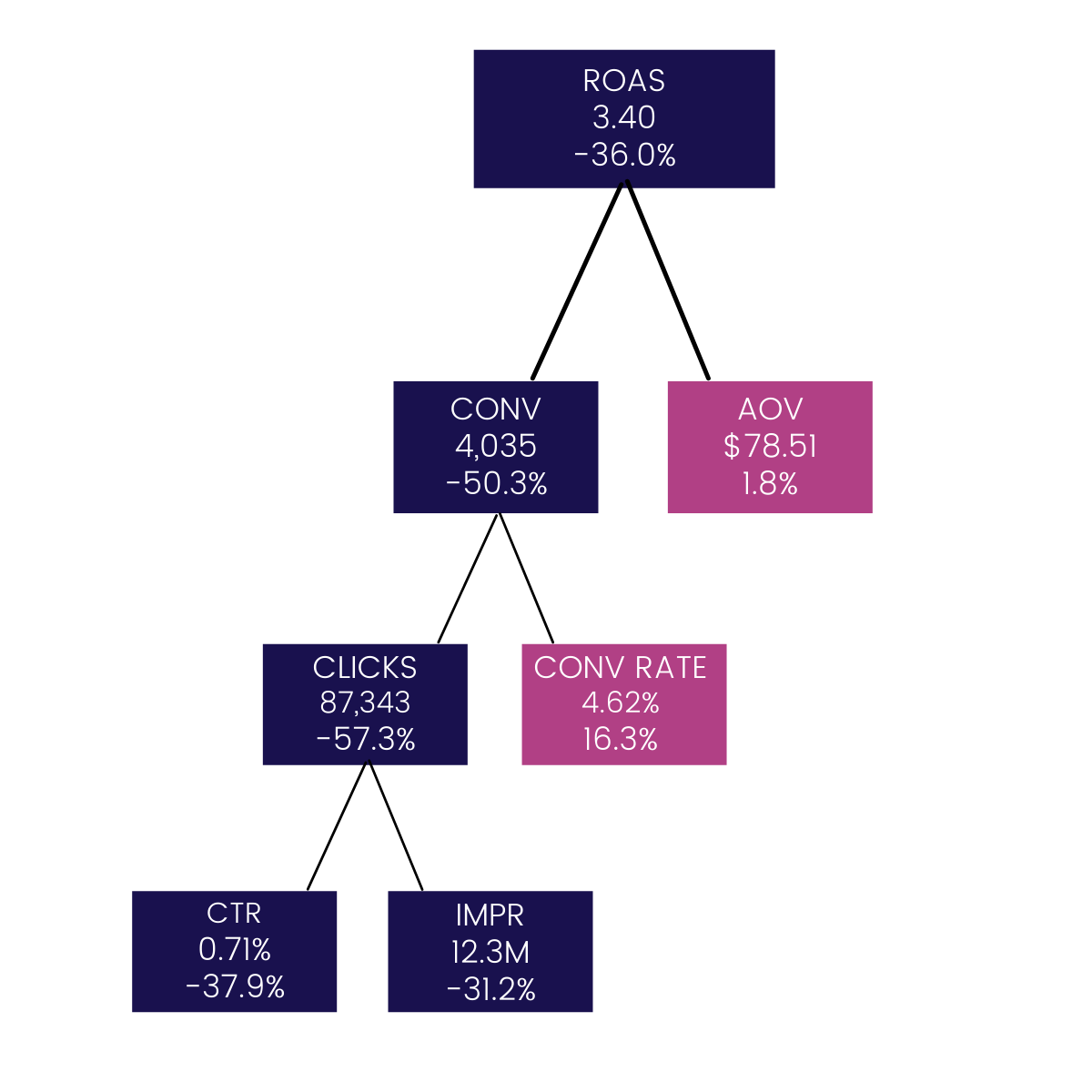Simplify Your Digital Campaigns With a Decision Tree
We were recently reviewing one of our campaigns that had fallen into an unusual slump. We checked the normal key metrics—clicks, impressions, CTR, conversion rate, AOV, ROAS—trying to figure out what went wrong. We were puzzled.
Maybe the ad copy had gotten stale and we needed to run a new ad copy test. Maybe search trends had changed and we needed to switch out our targeted keywords. Maybe the industry had reached a new level of competition and our account needed to be completely restructured in order to differentiate it from competitors. There were too many factors involved!
That’s when we remembered our trusty old decision tree! What is a decision tree you ask? A decision tree is a flowchart-style diagram to help you analyze various courses of action you might take for any given obstacle, and the consequences for each. This method can help map out a course of action to follow.
We typically use the tree outlined above, but it’s important to remember that each digital campaign is different and the exact layout and specifics of the tree isn’t as important as having it organized to show the relationship between each metric.
How do you use a Decision Tree?
You first add your primary key performance indicator (KPI) at the top of the tree and work down from there. In the above tree’s case, the KPI is ROAS (Return on Ad Spend). Quick marketing lesson: ROAS is calculated by dividing the total campaign revenue by the total campaign cost.
You initially have two metrics to look at in the example above: Conversions and Average Order Value (AOV). Since AOV is up 1.8%, we know that isn’t a source of our issue. So, we take a look at Conversions—which is down. At that point we’ll draw ‘branches’ to include more metrics to evaluate the cause of our low ROAS. In some cases, you will find several areas that need to be improved upon. But that doesn’t mean you stop there! Continue to move down the tree because there may be other potential issues.
Sound simple? It’s not always that easy. Finding the source of an under-performing campaign is only half of the journey. You still have to figure out what needs to be changed to improve the campaign. In our case, we have a few metrics that need attention—impressions, CTR and clicks.
How to decide what optimizations to make?
Often times deciding what optimization to make can be more difficult than finding the areas you need to improve. Again, simplification is key to deciding what to do next. At the most fundamental level, there are really only 5 questions to ask yourself when trying to choose the correct optimization.
How much money are you spending per day?
What is your CTR?
What is your CPC?
What keywords are you targeting?
What do your ad copy and assets look like?
Even though this sounds fairly simple, the complexity comes from all of the variations within each of these optimizations and how they interact.
For example: If your CTR is low (typically under 1%), it’s an indicator that your ads aren’t performing because of lower engagement. In this case, targeting new audiences by updating your keywords might be beneficial. But it doesn’t stop there! Now you’ll have to take a look at your ad copy. Does it make sense with your new audience? And what about your CPC? This metric represents how much it costs you to get a user to your website. Adjusting your daily budget or the longevity of your campaign may be smart moves here.
These 5 questions must be addressed when you manage a paid ad campaign.
Wrapping up
Even when you simplify the process as much as possible, managing a successful paid media campaign is still incredibly complex. Unfortunately, there’s never a simple solution that works 100% of the time.
Remember, one of the best perks of a decision tree is its flexibility. By visualizing different paths you might take, you might find a course of action you hadn’t considered before, or decide to merge paths to optimize your results.



